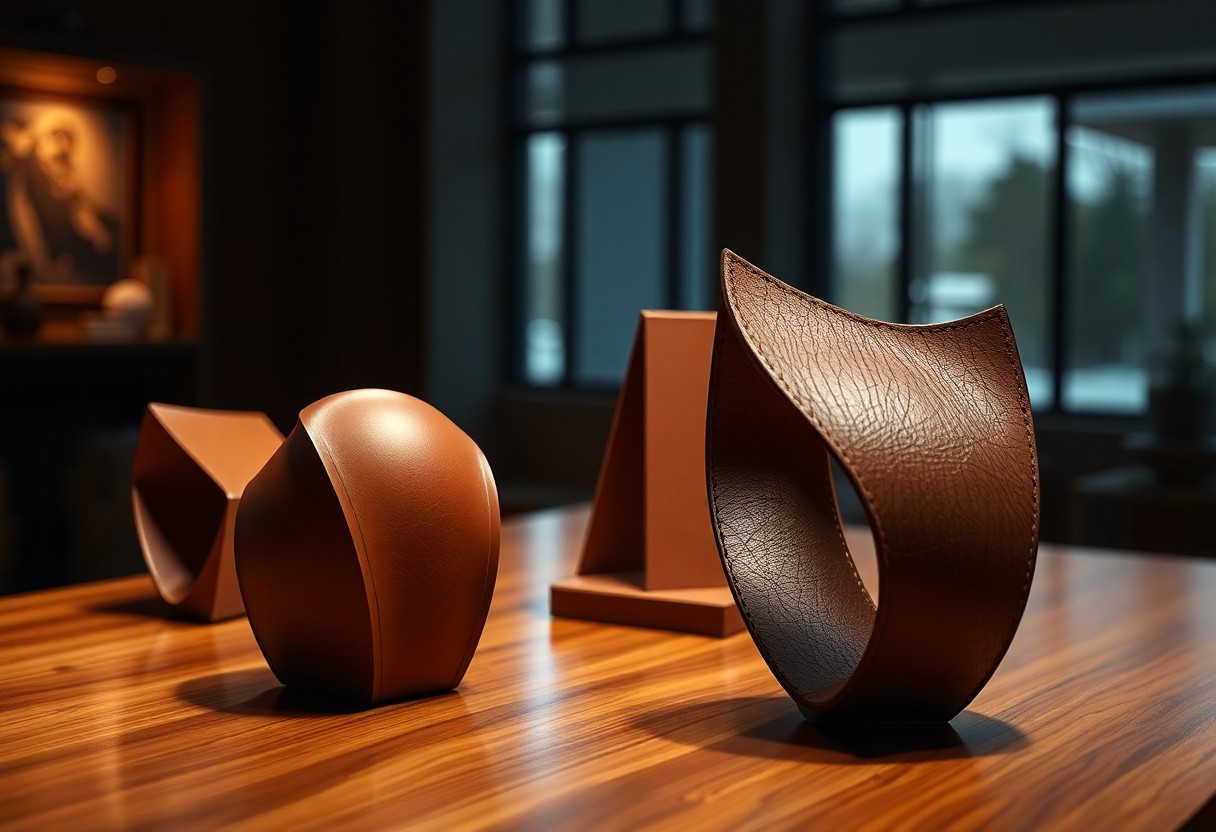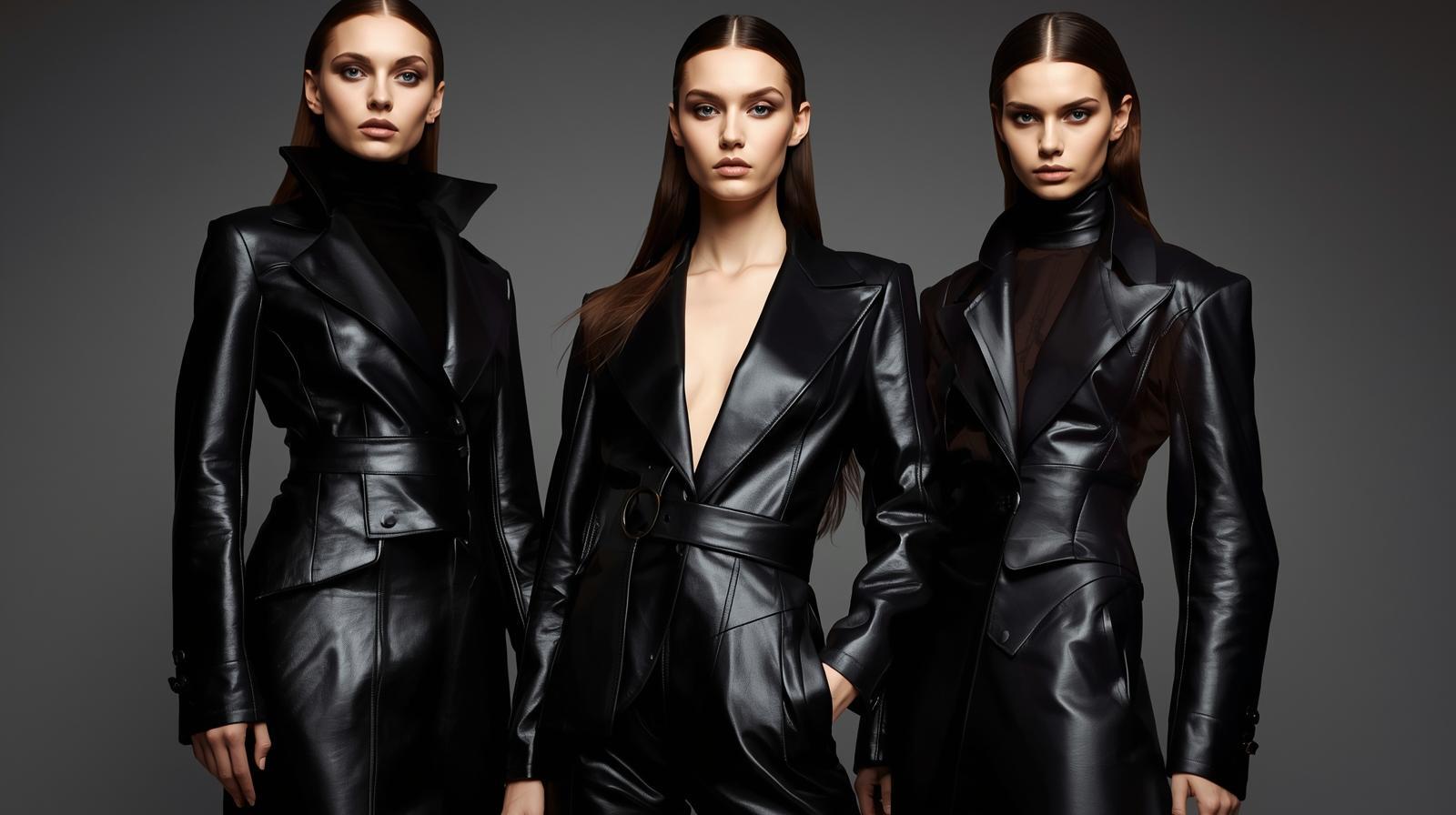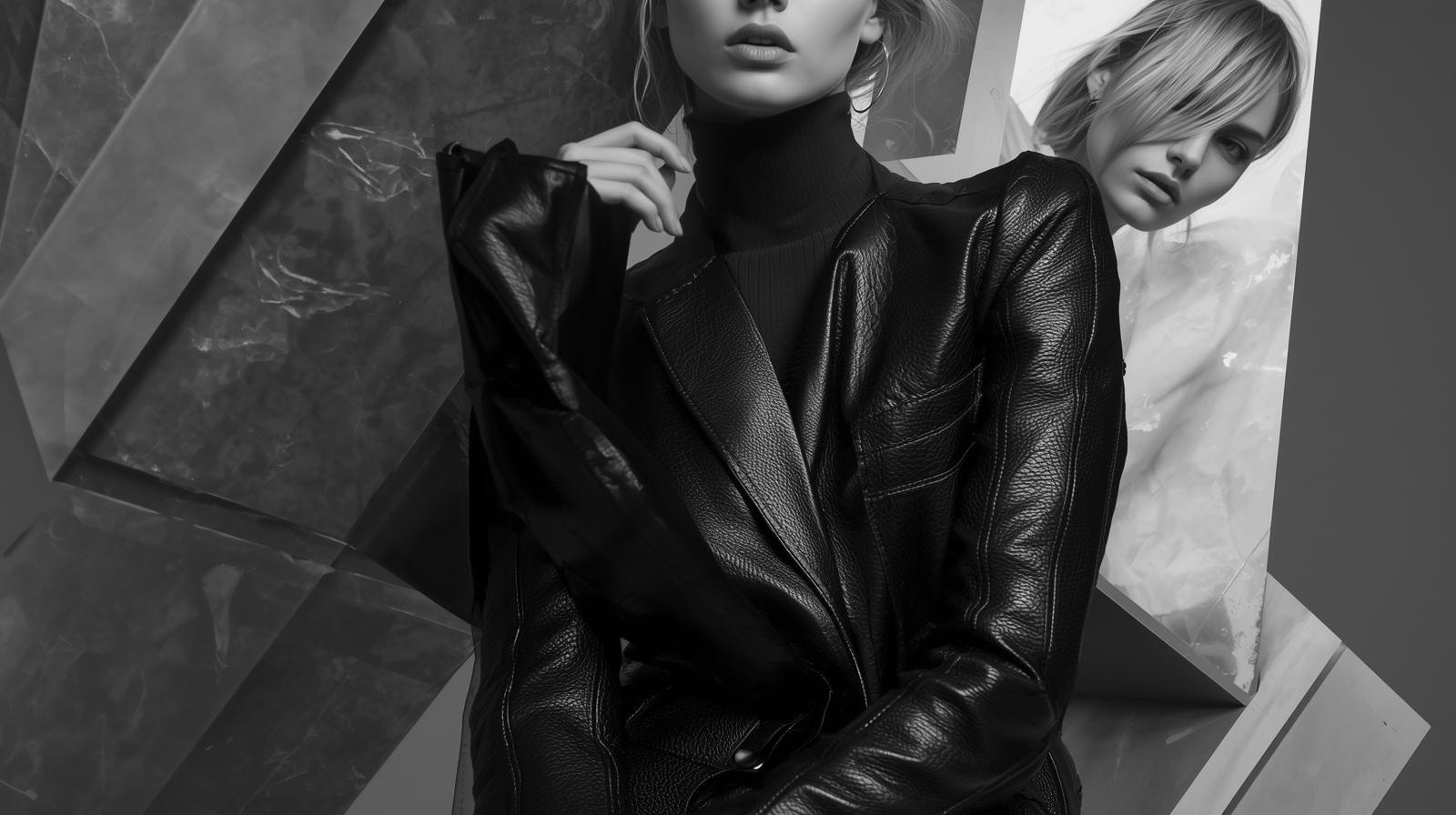2nd Oct 2025
Sculpted Leather - Architectural Silhouettes Transforming Classic Skins

Many designers are redefining the boundaries of leather craft with sculpted leather, where architectural silhouettes breathe new life into traditional skins. This innovative technique enables you to explore textiles in a dynamic way, merging form and function seamlessly. As you incorporate these striking designs into your projects, consider how they can enhance aesthetics while maintaining durability. The evolution of sculpted leather is not just a trend, but a transformative approach that elevates both style and creativity in the world of fashion and interiors.

The Art of Sculpted Leather
Sculpted leather transcends traditional craftsmanship, merging artistry with functionality. This technique allows artisans to create intricate shapes that mimic architectural beauty, enhancing the aesthetic appeal of leather goods. The fluidity of the material is manipulated to produce stunning silhouettes that are both tactile and visually captivating, inviting you to appreciate every curve and contour.
Historical Perspectives
Your understanding of sculpted leather is deepened by its rich history, dating back to ancient civilizations that employed leatherwork for both utilitarian and decorative purposes. Notably, the Renaissance period saw elevated techniques, as artisans crafted symbolic motifs and intricate designs that embodied cultural narratives. This artistic lineage showcases how leather has evolved, paralleling advancements in technology and design philosophies over centuries.
Techniques and Methods
Contemporary sculpted leather employs a variety of techniques, including heat molding, carving, and wet forming, each allowing you to manipulate the material in unique ways. The artistic vision comes to life through tools like knives and molds, enabling you to achieve the desired depth and detail in your pieces.
Heat molding involves applying precise temperatures to reshape leather, creating dynamic forms that hold their structure. Carving permits intricate designs, enhancing visual interest while maintaining functionality. Wet forming allows flexibility and expansion, perfect for developing complex shapes that spring back into form. Each method has its unique properties: for example, heat molding can shape thick leathers, while wet forming works best with thinner skins. Through these diverse techniques, you can explore sculpted leather's vast potential, pushing the boundaries of conventional leather design and production.
Architectural Inspirations in Leather Design
Leather designers are increasingly drawing from architectural forms, infusing garments, accessories, and interiors with striking silhouettes that echo the precision and artistry found in modern buildings. This convergence of fashion and architecture not only enhances the tactile appeal of leather but also elevates its overall aesthetic, transforming everyday items into remarkable statements of style and structure.
Influences from Modern Architecture
Contemporary architecture, characterized by clean lines and innovative materials, serves as a vital source of inspiration for leather design. You will notice how minimalist structures inform the sleek, streamlined quality of leather pieces, creating an intersection where practicality meets visual intrigue. The use of *negative space* in architectural design often translates into cutouts and asymmetries within leather garments, enhancing movement and form.
Iconic Architectural Silhouettes
Iconic structures like the Sydney Opera House and the Guggenheim Museum offer powerful visual cues for leather artisans. Their unique forms allow you to explore the potential of leather to mimic or reference these architectural marvels, creating shapes that are not just functional but also artistic. Emphasizing these forms enables you to showcase the versatility of leather as both a medium and a canvas for storytelling through design.
Consider how the flowing roofs of the Sydney Opera House can inspire a collection of leather jackets with dynamic, cascading lines that evoke movement. You might experiment with layering techniques that reflect the structure's sails, creating depth and texture in each piece. Similarly, the circular forms of the Guggenheim Museum can inform circular bags or curved silhouettes that challenge traditional leather wear. Such interpretations not only celebrate the original architectural intent but also invite you into a conversation of innovation within material craftsmanship.
Material Properties of Leather
The unique material properties of leather contribute significantly to its architectural applications. Variations in texture, grain, and finish affect not only aesthetics but also performance qualities. Leather's breathability, moisture resistance, and natural insulation capacity make it an appealing choice for innovative designs. Moreover, the ability to manipulate leather through techniques such as sculpting enhances its adaptability, allowing you to explore its potential in various architectural contexts.
Types of Leather Used
Different types of leather serve distinct purposes in architectural applications. You might encounter:
- Full-grain leather
- Top-grain leather
- Suede
- Napa leather
- Bonded leather
Assume that each type provides specific benefits that can enhance your project’s overall aesthetic and functionality.
| Type of Leather | Characteristic |
| Full-grain leather | Highly durable, retains natural grain |
| Top-grain leather | Soft, less durable than full-grain |
| Suede | Soft texture, less water-resistant |
| Napa leather | Soft and luxurious, dyed in various colors |
| Bonded leather | Economical, made from leather scraps |
Durability and Flexibility
Leather's durability and flexibility make it a prime candidate for architectural applications. You’ll find that high-quality leather withstands wear and tear, maintaining its integrity over time. Its inherent flexibility allows for creative forms and structures that can adapt to various environments.
Durability is a key consideration: high-quality leather can last for decades when properly cared for, while retaining its visual appeal. For instance, full-grain leather not only resists cracking but also develops a rich patina that enhances with age. This ability to bend and flex without losing structure is ideal for sculptural designs, ensuring your creations are both striking and long-lasting. When considering architectural silhouettes, the characteristics of leather can significantly influence your design's functionality and aesthetic appeal.
The Design Process
The design process for sculpted leather involves a meticulous approach that merges creativity with technical skill, ensuring a perfect balance between aesthetic appeal and functionality. Each phase demands careful consideration of material properties and the intended application, leading to designs that resonate with architectural integrity while remaining wearable.
Conceptualization and Prototype Development
In the conceptualization phase, you explore artistic themes inspired by architecture, translating these ideas into initial sketches and digital models. Prototyping allows you to experiment with shapes, textures, and cuts, using CAD software and traditional techniques to create three-dimensional representations. This iterative process refines your vision and builds a tangible connection to the final product.
Finalizing Designs for Production
The transition from prototype to final design involves precision in detailing, material selection, and manufacturing techniques. You'll assess each prototype for aesthetic qualities and structural integrity, using feedback from wear-testing to fine-tune your designs. Subsequently, you establish specifications, ensuring that production methods align with your original artistic intent.
In finalizing designs for production, you establish a comprehensive workflow that integrates quality control standards and sustainable practices. This phase often involves collaborating with skilled artisans who understand the nuances of leatherworking. By developing detailed tech packs that outline every aspect—from stitching patterns to color breakdowns—you ensure that each piece maintains its architectural elegance while meeting the rigorous demands of production. Engaging with suppliers early on helps secure the best materials, ensuring consistency and durability in your designs. Ultimately, this thorough approach translates your bold concepts into stunning, market-ready pieces that resonate with your audience.
Applications in Fashion and Interiors
Fashion Statements
Sculpted leather pieces are making bold statements on runways worldwide. Designers utilize architectural silhouettes to create garments that not only fit but also sculpt the body, enhancing forms in unexpected ways. Collection highlights include intricately layered jackets and structured dresses that feature bold lines and innovative textures, often leading the trend toward sustainability as brands commit to using ethically sourced leather.
Interior Design Trends
Sculpted leather's impact extends beyond fashion into interior design. Artisans craft striking furniture and home accessories that incorporate architectural elements, resulting in pieces that are both functional and visually stimulating. Leather wall installations, for example, combine durability with artistic expression, adding depth to modern living spaces.
Interior design trends reveal a growing preference for sculpted leather in both residential and commercial spaces. Designers are merging organic shapes with geometric forms, leading to innovative items like leather-clad seating that doubles as art installations. Rooms infused with these leather elements experience a transformation, where materials contribute to a cohesive, sophisticated aesthetic. Collaborations are emerging between furniture makers and fashion brands, capitalizing on leather's versatility. Home decor that features textured leather accents is gaining traction, emphasizing not just beauty, but also durability and sustainability in modern design.
Sustainability in Leather Crafting
Sustainable practices in leather crafting are reshaping the industry, focusing on minimizing environmental impact while retaining the intrinsic qualities of the material. Innovations in tanning processes, such as using natural dyes and vegetable-tanned methods, reduce harmful chemical exposure and improve biodegradability. Additionally, ethical sourcing of hides and increased recycling initiatives are driving change, ensuring that leather remains a viable option for eco-conscious consumers.

Eco-friendly Materials and Practices
Eco-friendly materials and practices are at the forefront of the sustainable leather movement. By choosing hides that come from responsibly raised livestock and employing low-impact tanning techniques, you can significantly decrease the carbon footprint of your leather products. Brands are also exploring alternatives such as mushroom leather and lab-grown materials, paving the way for future innovations that align with environmental goals.
The Future of Leather in Design
As the demand for sustainable fashion grows, the future of leather in design looks promising and transformative. Embracing technological advancements and eco-conscious materials will allow designers to create more sustainable options that don't compromise on quality or aesthetics. Collaborative efforts between artisans and tech developers are leading to a renaissance of innovative designs, where leather can be both luxurious and environmentally friendly. By embracing these changes, the leather industry can evolve to meet modern consumer expectations while preserving its rich heritage.
To wrap up
Drawing together the innovative techniques of sculpted leather, you can appreciate how architectural silhouettes breathe fresh life into classic skins. This approach not only enhances the aesthetic appeal of leather goods but also showcases your appreciation for craftsmanship and design. By choosing pieces that embody this transformation, you embrace a unique blend of tradition and modernity that offers a distinct statement in your wardrobe.

